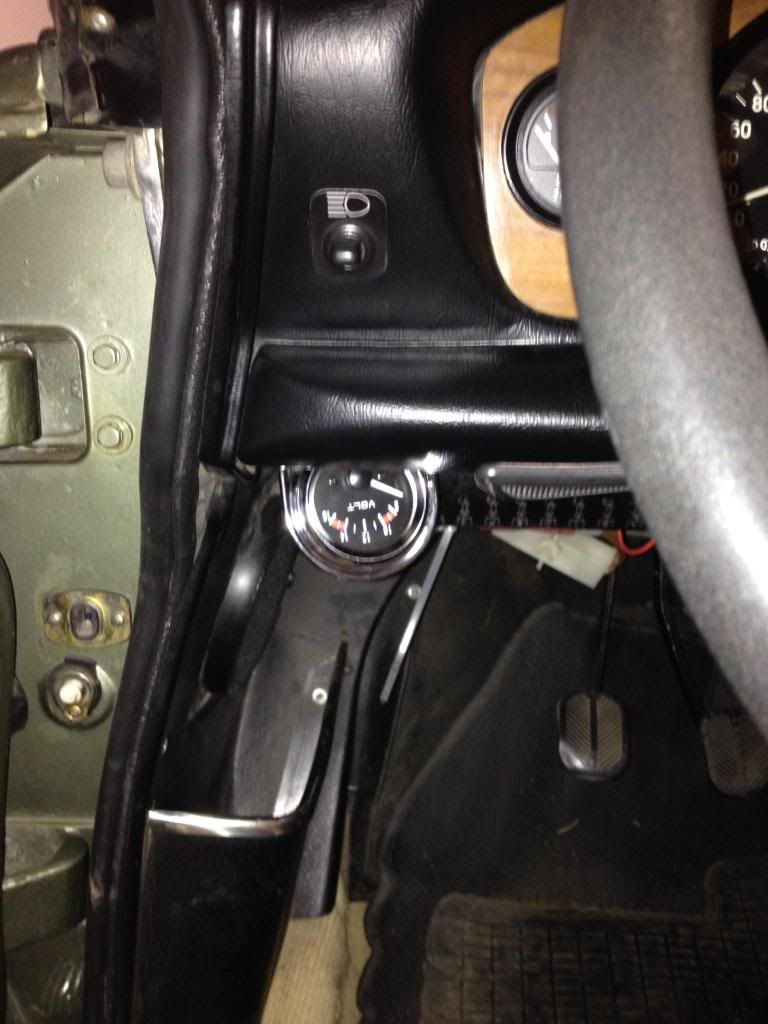My '81 FI has had some battery issues, so I wanted to keep an eye on the charging system. I wanted to watch the voltage out of the alternator. I found that fuse N, which is reserved for a power window motor (which my car doesn't have), had a spare connector.
Just in front of the fuse panel, under the dash, is a bolt holding a triangular bracket against a brace that runs across the bottom of the dash. It's an 8mm bolt and it will fit perfectly through one of the holes on a voltmeter bracket. It also acts as a perfect ground. In order to see the voltmeter gauge, I had to spin it so it was upside-down in the bracket and then bend the bracket so it faced upwards.
1. Connect the positive connector on the voltmeter to the chosen fuse (in my case, this was fuse N)
2. Connect the voltmeter negative terminal to the grounding bolt - the same bolt holding the bracket in place
3. Bolt in the voltmeter
You might find it easier to cut a slot in the bracket hole and slide it under the loosened bolt head. Taking the bolt out completely is a bit rough because it's a real bugger to get back in - not a lot of room to get your hand in behind to tighten the nut.
If you want to read the voltmeter in the dark, you'll need to install a light bulb and wire it to the headlight switch circuit. I didn't bother with this because I don't do a lot of night driving, if any at all.
Turn the ignition switch to the 'on' position to light the dashboard lights. The voltmeter should show the battery voltage. Run the engine and the voltmeter will show the alternator voltage. This will probably differ depending on which fuse you use.
What I like about this installation is that it's a permanent temporary solution. In other words, it doesn't affect the dashboard layout, so if you're keen on keeping it all original, you can easily pull out the voltmeter without any scarring or ill effects on the condition of the car's interior.
None of this is earth-shattering news, but if it saves someone a few minutes of mucking about, then all is well.

